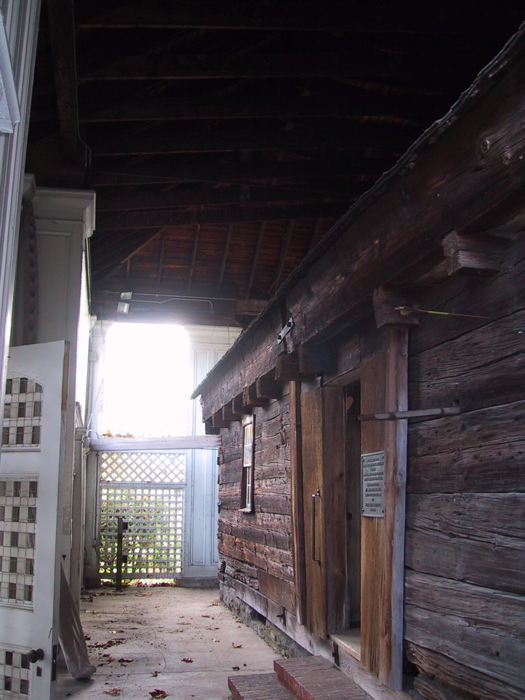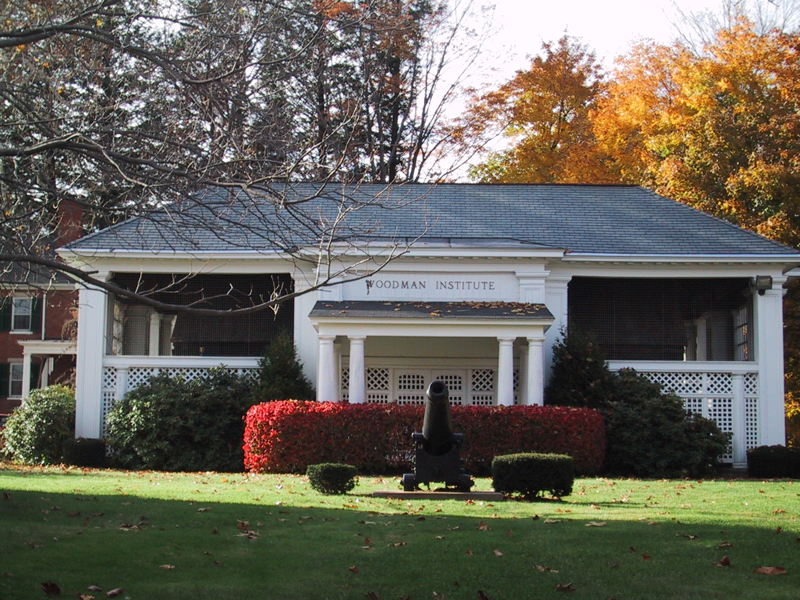Woodman Institute
|
Woodman Institute, Dover NH The Woodman Institute Museum is located at 182 Central Avenue in Dover NH. It is a museum dedicated to history, science and the arts. It was created in 1915 with a bequest of $100,000 from philanthropist Annie Woodman to encourage her city's education in those three fields. The institute opened on July 26, 1916. The museum's campus now includes three brick houses of Federal style architecture, one of which is the former home of noted abolitionist Senator John P. Hale. Inside are exhibits of local history and natural history, in addition to art and antiques. One famous item is the saddle in which President Abraham Lincoln rode to review troops shortly before his assassination. A collection of artifacts showcases the nation's past, with a special emphasis on Dover's history. July 2016, Photo 46 |
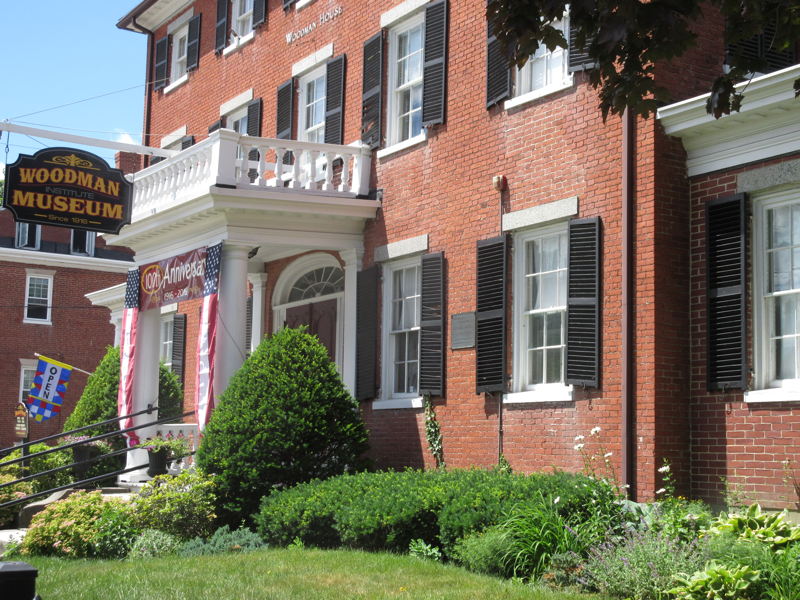
|
|
Woodman, one of the structures. Visitors can see the sword a Japanese delegate to the 1905 Portsmouth Peace Conference (Treaty of Portsmouth) gave to a waiter at the Hotel Wentworth, examples of Dover's textile output, relics from every war in which the United States has fought, an old 13 star American flag, a 10 foot stuffed polar bear from the Arctic, an old piano with genuine ivory keys, and a collection of stuffed birds, fish and mammals. On the museum's grounds is the 1675 William Damm Garrison, one of the oldest intact garrison houses in the state, as well as the oldest house in Dover. It survived the Cochecho Massacre, and was later moved to this location for preservation under a permanent shelter. Also within the shelter, visitors may see a brass Napoleon cannon used in the American Civil War, one of only ten left in existence. July 2016, Photo 66 |
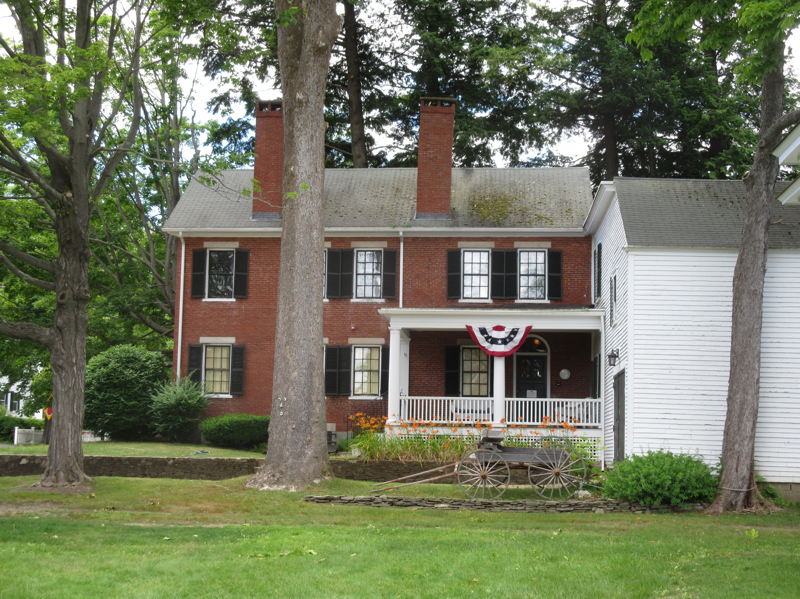
|
|
Woodman, one of the structures.
July 2016, Photo 63 |
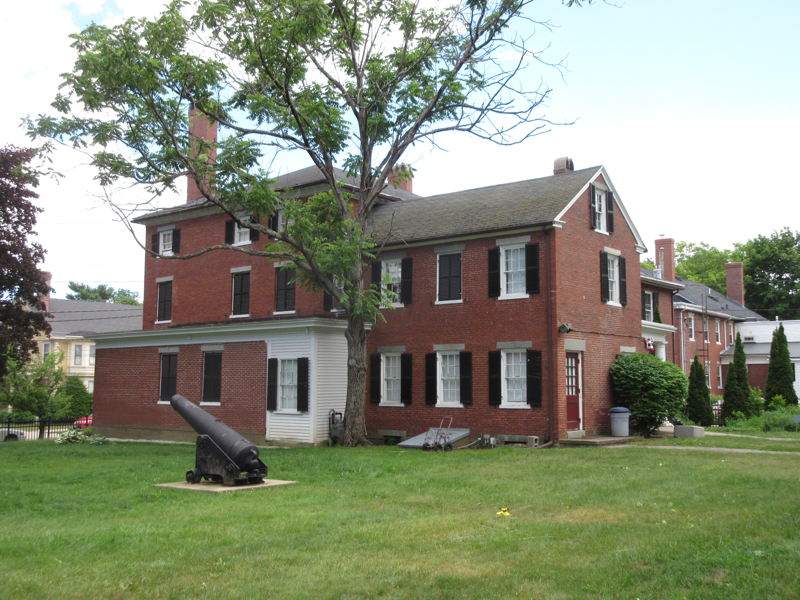
|
|
Large Lobster, part of an extensive collection at the Woodman
July 2016, Photo 47 |
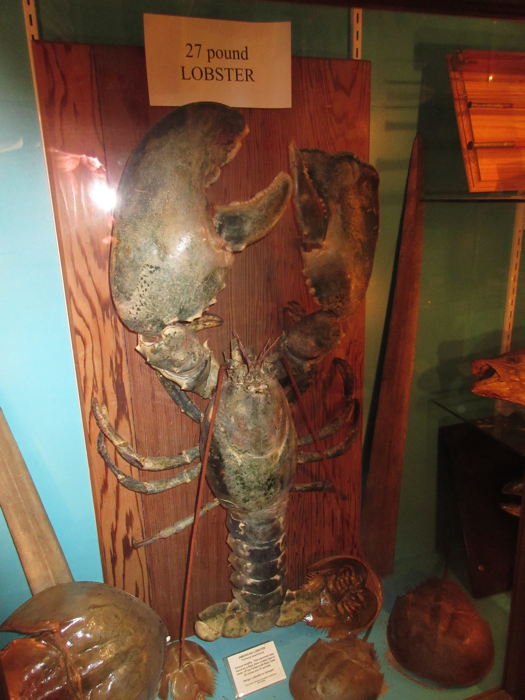
|
|
Huge Clam, part of an extensive collection at the Woodman
July 2016, Photo 48 |
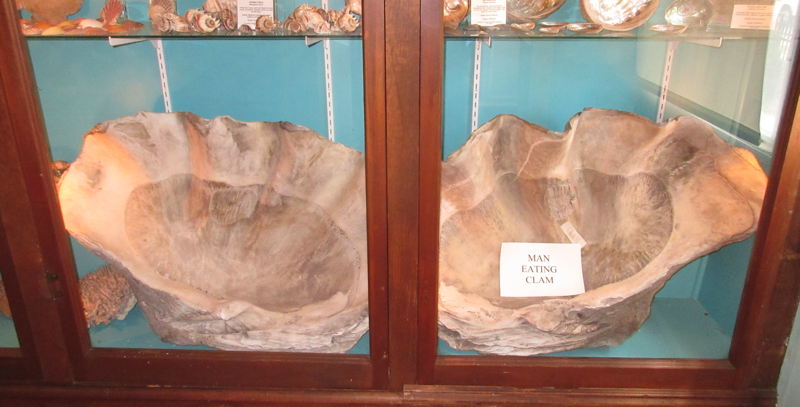
|
|
Actual lectern once used by Lincoln
July 2016, Photo 49 |
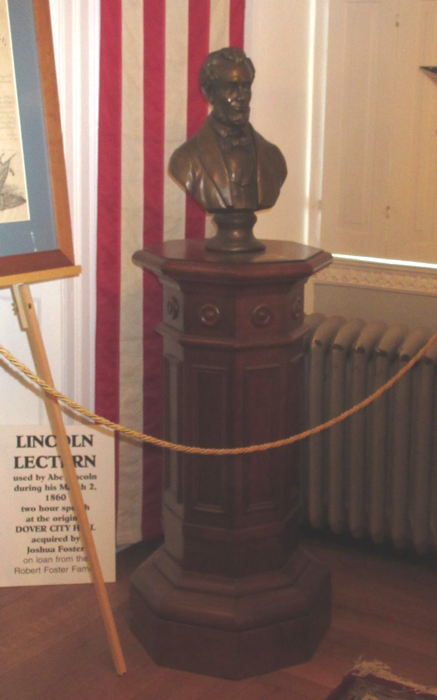
|
|
Stuffed Polar Bear, part of an extensive collection at the Woodman
July 2016, Photo 50 |
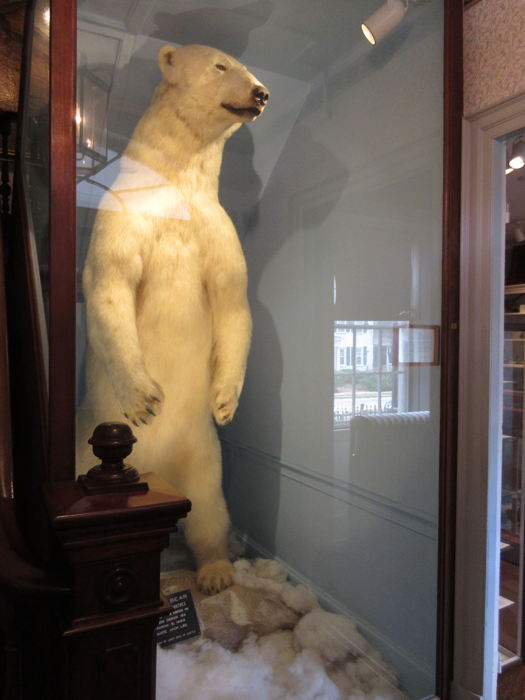
|
|
WWI machine gun
July 2016, Photo 52 |
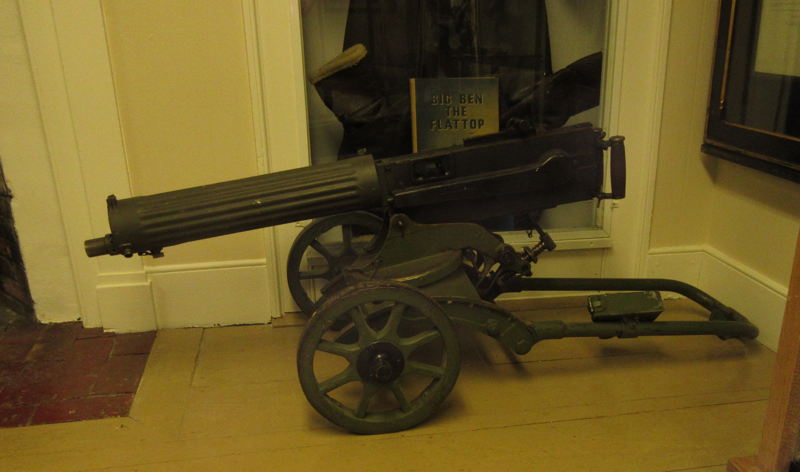
|
|
Prussian Infantry Helmet Enlisted man's helmet, around 1915. Used in combat July 2016, Photo 53 |
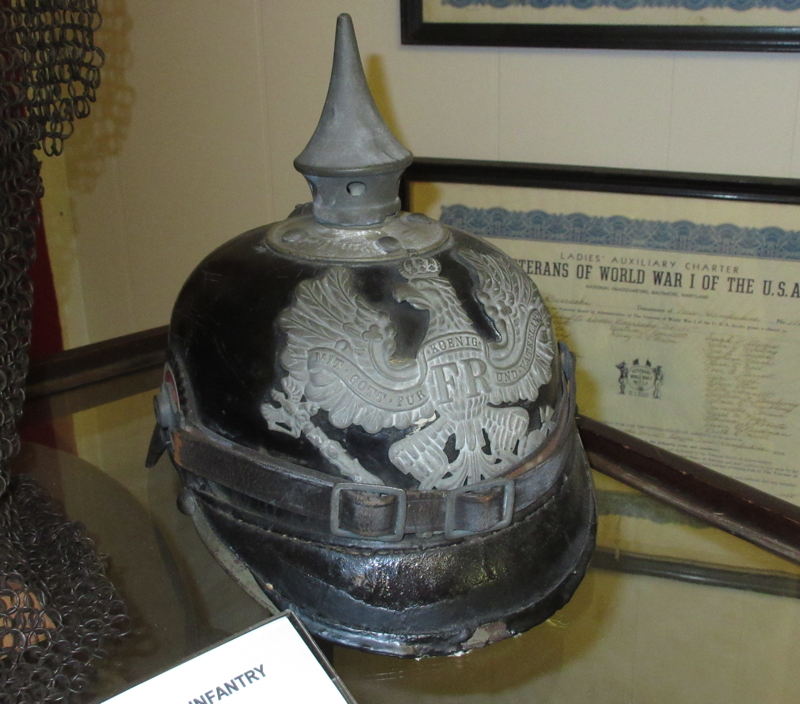
|
|
WWII Poster
July 2016, Photo 55 |
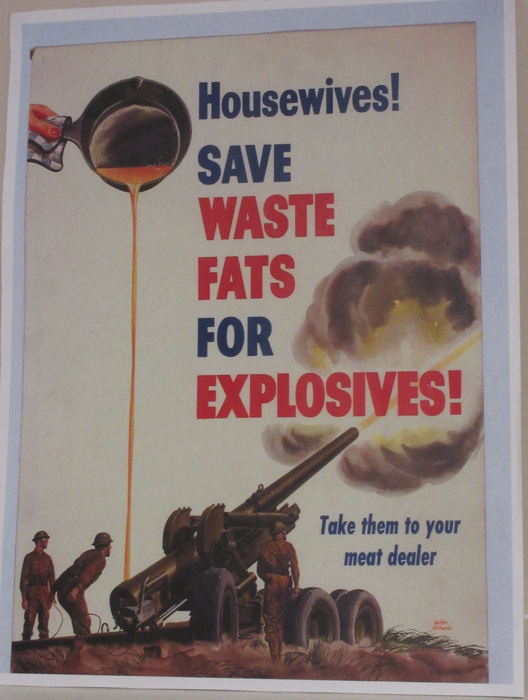
|
|
Magnavox RAL-7 radio receiver with RCA CND20131 power unit. Used in submarines, WWII. July 2016, Photo 57 |
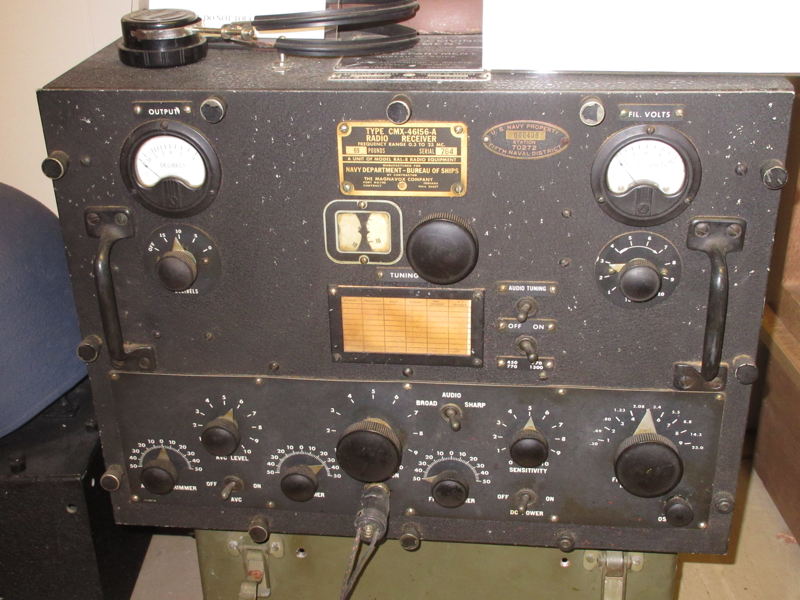
|
|
1675 William Damm Garrison House This is a protective shell built around the Garrison House. One of the oldest intact garrison houses in the state, as well as the oldest house in Dover. It survived the Cochecho Massacre, and was later moved to this location for preservation under a permanent shelter. Garrison houses were defensive structures used to protect residents from indian attacks. The name came from William Damm Garrison, who built one of the first ones. July 2016, Photo 45 |
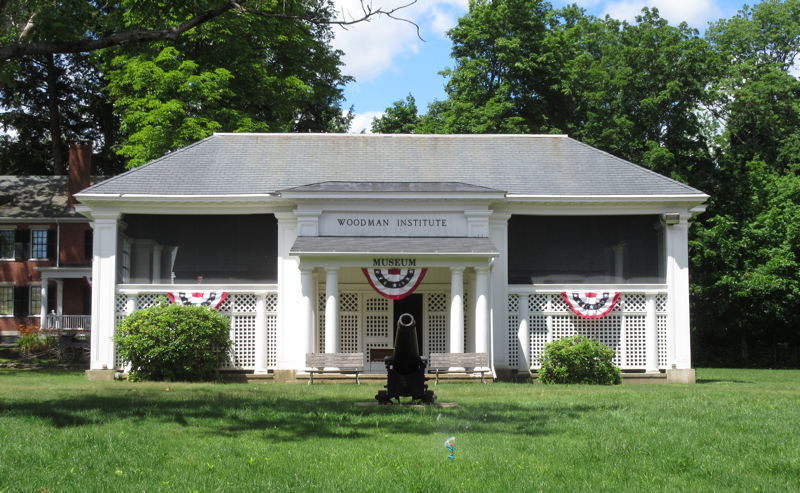
|
|
1675 William Damm Garrison House This is a protective shell built around the Garrison House. July 2016, Photo 67 |
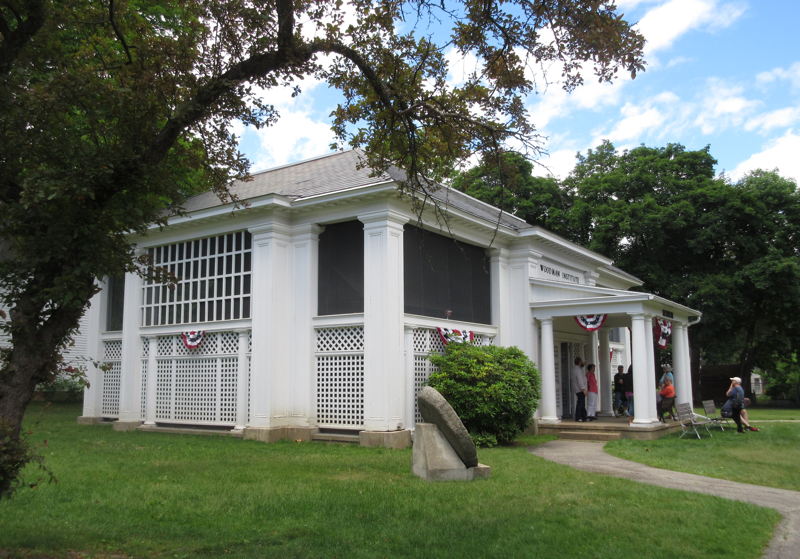
|
|
Brass Napoleon cannon used in the American Civil War, one of only ten left in existence. July 2016, Photo 58 |
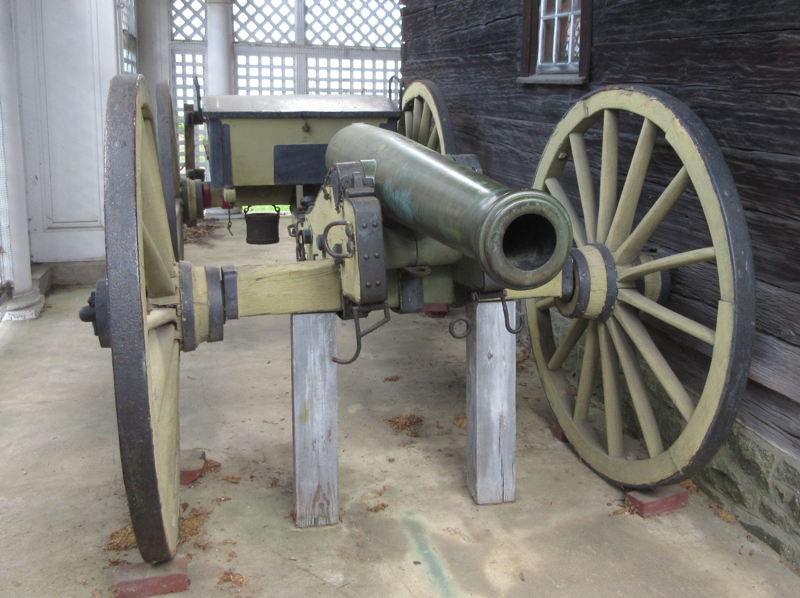
|
|
Side of the Garrison
July 2016, Photo 59 |
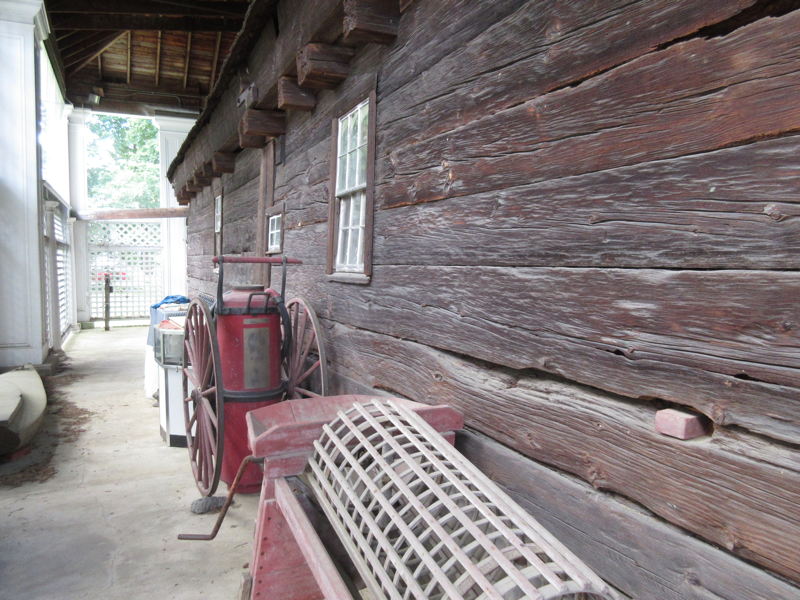
|
|
Garrison, original window Most of the windows were replaced with larger ones after the indian threat diminished, but this one remains. July 2016, Photo 60 |
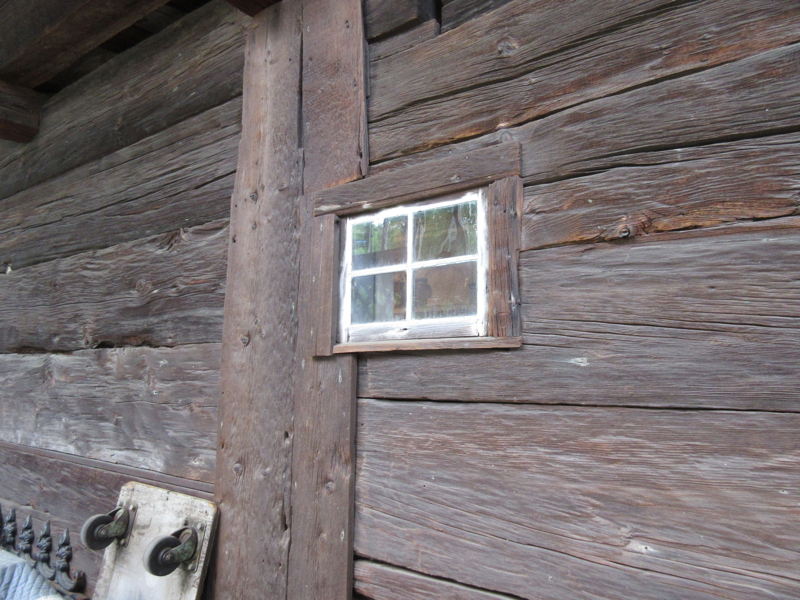
|
|
Garrison, a glimpse of the exterior.
July 2016, Photo 61 |
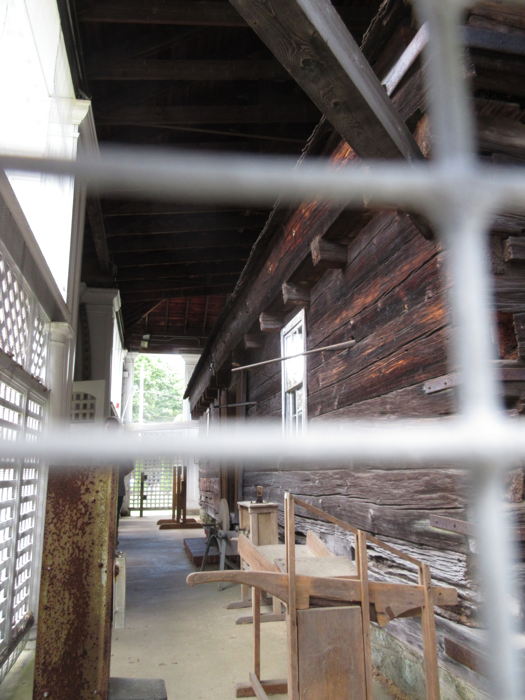
|
|
Woodman, cannon on the grounds.
July 2016, Photo 64 |
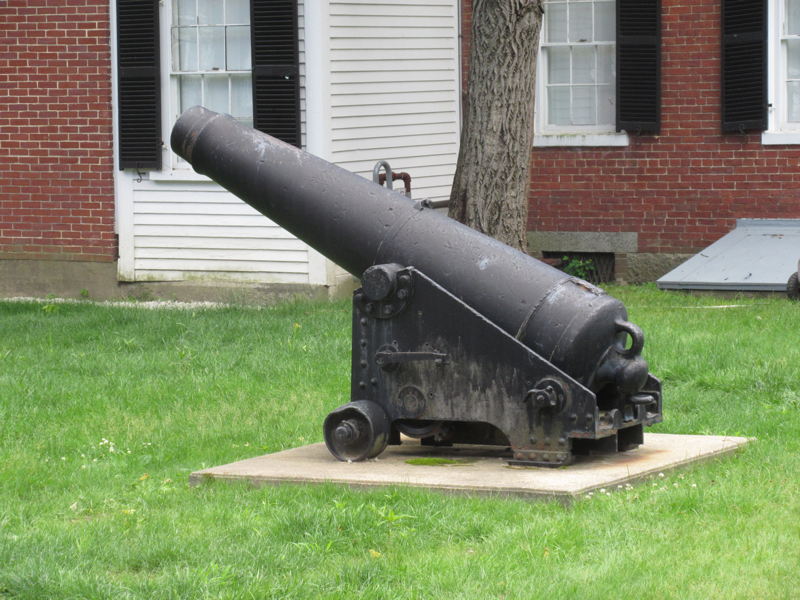
|
|
Woodman, millstone?
July 2016, Photo 65 |
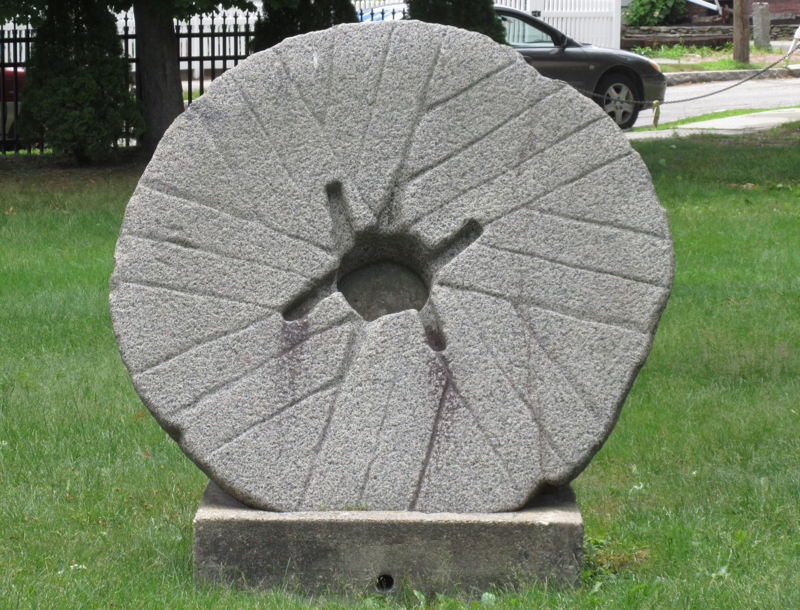
|
